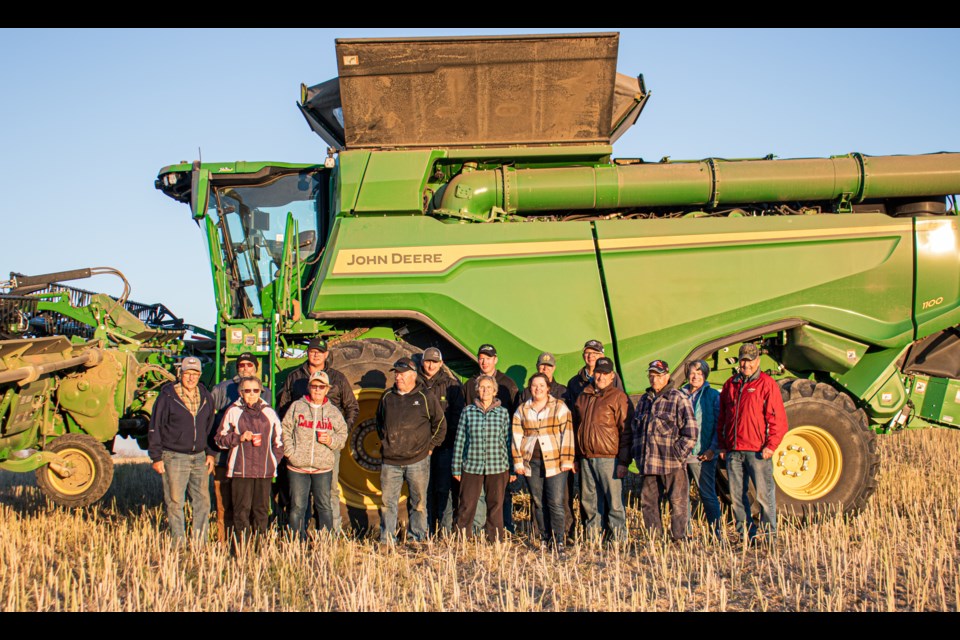MALLAIG – The reality that people across the world deal with food security issues and often go to bed hungry is something that groups such as the Acres of Hope Growing Project based in Mallaig aim to address.
Acres of Hope is one of Canadian Foodgrains Bank’s (CFB) 240 growing projects in Canada, and one of the 30 in Alberta.
The project is supported by the surrounding community and includes farmers and agribusinesses that have donated the use of land and provided free farm tillage service. Acres of Hope aims to help address food security in third world countries through contributions to the CFB.
The group grows crops and sells the crops, with the proceeds going to the CFB.
RELATED: Acres of Hope completes fall harvest
On April 28, Acres of Hope held an appreciation lunch in Mallaig.
Abe Janzen, CFB’s Alberta Regional Director, was also present as a speaker, where he discussed food insecurity around the world.
Phases of Food Insecurity
There are six phases to community or national food insecurity, according to Janzen. The first is minimal. This means people can acquire food and non-food without difficulty.
The second phase is when people can eat just enough, but acquiring non-food items would require some coping strategies.
Janzen says almost seven million people in Canada are “stressed their households are actually not food secure anymore.”
Phase 3 is known as crisis. This is when people can’t acquire enough food, which leaves them malnourished. To buy food, they may have to sell some of their belongings.
Phase 4 is emergency. This is the phase when “malnutrition and death is beginning to happen,” says Janzen. People start to sell off assets, are severely malnourished and could die.
Other effects include children not going to school anymore because parents can no longer afford food and clothes.
Phase 5 is known as catastrophe. People have done all they can to afford food. But they have nothing left. They are destitute and acutely malnourished, which is the deadliest form of hunger.
The final phase is the declaration of famine in a community. People may be among the 20 per cent of families facing extreme food shortage, and 30 per cent of children in a community are facing acute malnutrition. Every day, someone dies because of hunger.
Why people are hungry
War, famine, inequality, climate change and natural disasters, or failures in the food system, all contribute to why people are hungry, says Janzen.
Imagine walking down a street and looking around, seeing only ruins – infrastructure destroyed because of conflict. You have no money, with only a food voucher in your pocket to buy something to eat for yourself and your family - given that you even find a market in the first place.
This is happening in Syria, according to Janzen. “In Syria... war has been going on since 2011.” Another example of a country experiencing this situation is Ukraine.
“Because of the restriction of grain, it causes even more famine in a lot of these areas because they don’t get proper nutrition,” says Janzen.
“I think conflict in my opinion, is probably the biggest problem,” Janzen says, adding there is still a lot of work to be done to ensure global food security.
Mission
Attendees at the Mallaig event received some updates on the Acres of Hope project, including where the money they raised will be going.
Each dollar raised by the project is matched four-to-one by the federal government, Claude Seguin, treasurer of the project, told the crowd. Last year, the project raised about $50,000, which includes an estimate of the remaining crops that still need to be sold.
The money will help fund a 12-month humanitarian response project in Syria and in Ukraine, as well as help fund food assistance programs in Syria that will help feed about 3,000 households – or 50,000 people per month, explains Seguin.
The effort is only made possible through the unity of the community, Seguin adds.
“Thank you.”



